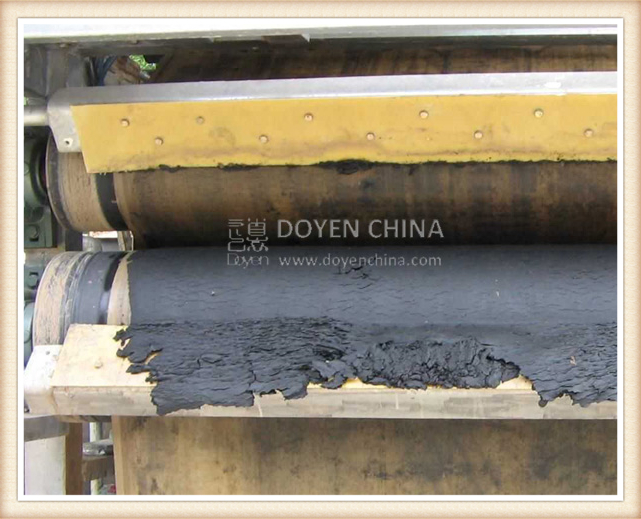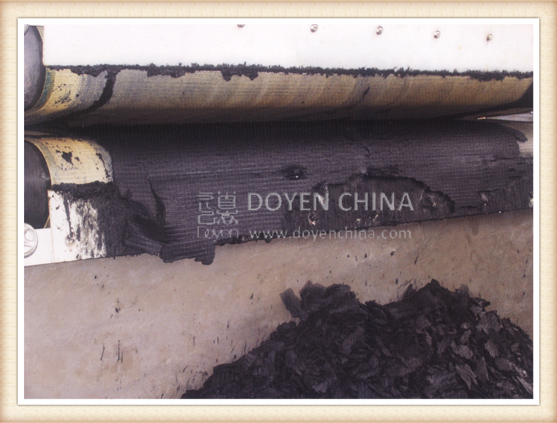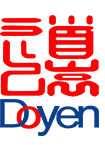

Tel:
+86-757-8633-0278
Email:doyen@doyenchina.com
Fax:+86-757-86287390
Address:Room 201, Building No. 24, Yicui Rose Garden, No. 2, Jihua 7 Road, Chancheng District, Foshan City, Guangdong Province, China 528000.
The belt filter press produced by doyenchina adopts the combination of ultra long filter and strong pair of roller press, which has good operation effect, large processing capacity, low moisture content of filter cake, low equipment operation cost, strong corrosion resistance, convenient operation and continuous operation.

At present, the belt filter press, which is a combination of ultra long filtration and counter rolling, was founded in our country. It has the advantages of large capacity, continuous operation, low operation cost, low water content of filter cake, convenient operation and maintenance, etc., so as to replace the original box filter press and plate frame filter press. The working conditions of the belt filter press in the sludge dewatering of leather and fur wastewater treatment, such as: moisture content of filter cake, hourly treatment capacity, trouble free working time, etc., are closely related to the process technology of the belt filter press itself, the material used and the selection of flocculant. We are willing to work with you to work out a more scientific dehydration treatment plan for leather sludge according to the actual situation of sewage treatment in your unit. Welcome to visit our manufacturing workshop.
There are more than 2000 tanneries in China, and the amount of wastewater discharged each year accounts for 0.3% of the total amount of industrial wastewater discharged in China. Various auxiliaries, tanning agents, fatliquoring agents, finishing agents, etc. are used in the leather production process. The wastewater contains a large amount of salt, alkali, COD concentration, chroma, suspended matter, sludge, sulfide, chromium and other toxic substances, which makes the wastewater treatment very difficult. Due to the complexity of water quality and treatment difficulty of tannery wastewater, the treatment process is also relatively complex, in which air flotation and contact oxidation process are widely used and the technology is relatively mature.

According to the principle of separating and treating tannery wastewater, the treatment process of tannery wastewater generally begins with the separate collection of chrome containing and sulfur-containing wastewater for pretreatment, while the comprehensive wastewater is treated with biological and chemical treatment processes, and the high concentration chrome containing wastewater is collected separately and recycled with alkali precipitation; the high concentration sulfur-containing wastewater is collected separately and treated with catalytic oxidation and desulfurization. Comprehensive treatment of other tannery sewage (including the sewage after pretreatment) is transmitted to the sewage treatment plant through comprehensive pipeline for biological chemical secondary treatment. Through fine grid, aeration grit chamber, regulating chamber and primary settling chamber, the comprehensive sewage of primary treatment can balance the water quality and quantity, remove large particles of inorganic substances, part of COD and BOD. The secondary treatment includes biological treatment, traditional activated sludge process, piston flow reactor, and air blast aeration, in which pollutants are degraded or removed to a large extent. After the chemical treatment, the sewage enters into the chemical tank for chemical coagulation and sedimentation, and the coagulant is aluminum chloride of basic type and inclined tube sedimentation. SS and COD in sewage were further reduced. The primary sludge, excess sludge and chemical sludge generated in the process of sludge treatment and sewage treatment are collected together. After gravity concentration and sludge conditioning, they enter into the belt filter press integrated with lvtong brand concentration and dehydration and strong roll pressing. The filtrate is returned to the sewage treatment system, and the filter cake is transported out by the local environmental protection department for centralized treatment.
Welcome to joyce@doyenchina.com or visit https://www.doyenchina.com.
Jan-25-2020
admin

 +86-757-8633-0278
+86-757-8633-0278 doyen@doyenchina.com
doyen@doyenchina.com Sitemap
Sitemap